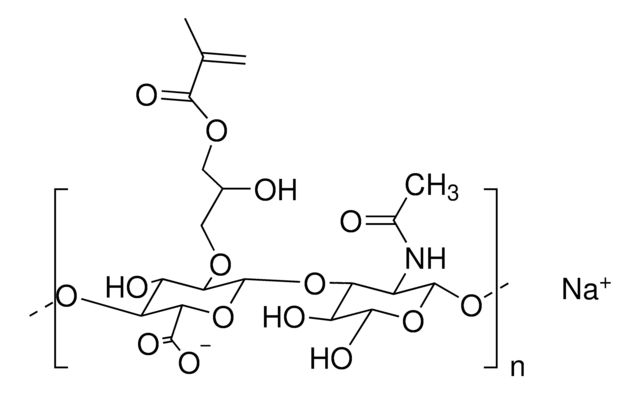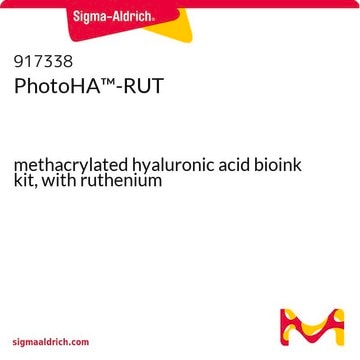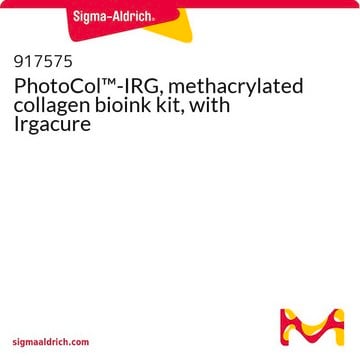917079
PhotoHA™-IRG, methacrylated hyaluronic acid bioink kit, with Irgacure
Synonym(e):
3D Bioprinting, Bioink, HAMA, Hyaluronic acid
About This Item
Empfohlene Produkte
Beschreibung
Methacrylated hyaluronic acid:
Degree of methacrylation: ≥ 45-65%
Qualitätsniveau
Sterilität
sterile; sterile-filtered
Mol-Gew.
Mw 100-150 kDa
Zusammensetzung
Product components :
Methacrylated hyaluronic acid (100 mg)
Irgacure photoinitiator (100 mg)
Lagertemp.
−20°C
Anwendung
Rechtliche Hinweise
H-Sätze
P-Sätze
Gefahreneinstufungen
Aquatic Chronic 2
Lagerklassenschlüssel
11 - Combustible Solids
Analysenzertifikate (COA)
Suchen Sie nach Analysenzertifikate (COA), indem Sie die Lot-/Chargennummer des Produkts eingeben. Lot- und Chargennummern sind auf dem Produktetikett hinter den Wörtern ‘Lot’ oder ‘Batch’ (Lot oder Charge) zu finden.
Besitzen Sie dieses Produkt bereits?
In der Dokumentenbibliothek finden Sie die Dokumentation zu den Produkten, die Sie kürzlich erworben haben.
Unser Team von Wissenschaftlern verfügt über Erfahrung in allen Forschungsbereichen einschließlich Life Science, Materialwissenschaften, chemischer Synthese, Chromatographie, Analytik und vielen mehr..
Setzen Sie sich mit dem technischen Dienst in Verbindung.









